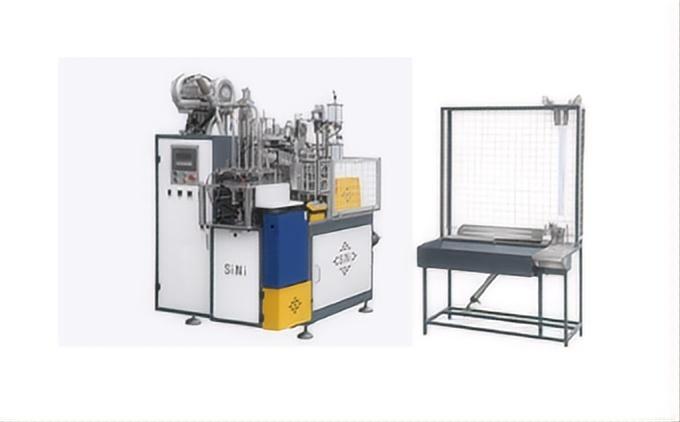Next: What is the Difference Between Single and Double Coated Paper Cups?
The global shift towards sustainable packaging, driven by plastic bans and eco-conscious consumers, has created a significant opportunity in the paper cup industry. Starting your own paper cup manufacturing business can be a profitable venture with careful planning and execution. Here’s a comprehensive guide covering the essential steps:
Identify Demand: Analyze your target market (local cafes, restaurants, hospitals, offices, event organizers, ice cream parlors). Is there unmet demand? Who are the major existing suppliers?
Understand Competition: Research competitors' products, pricing, quality, strengths, and weaknesses.
Define Your Niche: Will you focus on standard sizes, custom printing, specialty shapes (like cone cups), or specific sectors (e.g., premium coffee shops or fast food)? Consider eco-certifications (like FSC).
Pricing Strategy: Determine competitive yet profitable pricing based on production costs, competitor pricing, and perceived value.
Feasibility Study: Assess the overall viability, startup costs, potential profit margins, and break-even point.
Business Registration: Register your business structure (Sole Proprietorship, LLC, Pvt. Ltd., etc.) with the appropriate government authorities.
Factory License: Obtain an industrial/manufacturing license from the local municipal corporation or industrial development authority.
Trade License: Secure a license for commercial operations within your locality.
GST/State Tax Registration: Mandatory for manufacturing and selling goods.
Location Selection: Choose a suitable industrial area with adequate space, reliable power supply, water access, good ventilation, and transportation links. Consider proximity to suppliers and customers.
Infrastructure Setup: Design an efficient layout separating raw material storage, production floor, finished goods storage, quality control, and packing areas. Ensure smooth workflow.
Utilities: Arrange for sufficient power load, water supply, and compressed air if needed by machines.
Manpower: Hire and train skilled machine operators, quality control inspectors, helpers, and packers. Emphasize safety protocols.
High Speed Paper Cup Making Machine
The fully automatic high-speed paper cup machine has a rated speed of 120-150 cups per minute, supports paper cups from 4 ounces to 16 ounces, and is suitable for paper materials ranging from 190 to 350 g/m2 (single-sided or double-sided coated paper). The whole process is automated, and the cup mouth is double-curled to ensure the exquisite shape of the paper cup, which is very suitable for mass production and high-end brand customization.

Mid-Speed Disposable Cup Making Machine adopts the latest technology to make it energy-efficient, economical and durable. The shape is exquisite and the molds can be changed. SiNi will strive continuously to pursue the excellence in science and technology innovation. This paper cup forming machine adopts open cam design, automatic oil lubrication system and PLC control system to improve the machine function and performance.

Essential Materials:
PE-Coated Paper Board: Food-grade, moisture-resistant paper in various GSM weights (thicknesses). Sourced in jumbo rolls. Ensure FSSAI/FDA compliance.
Bottom Reels: Pre-cut circular bottoms (usually made from thicker board).
Inks (For Printing): Food-grade, non-toxic inks if offering printed cups.
Packaging Materials: Cartons, shrink wrap, pallets.
Supplier Selection: Build relationships with reliable suppliers offering consistent quality, competitive pricing, and timely delivery. Negotiate bulk purchase discounts. Always demand certificates of analysis/compliance.
Machine Setup: Configure the machine for the specific cup size and design.
Feeding: Load the jumbo paper roll and bottom reels.
Printing (Optional): If integrated, the design is printed onto the paper.
Cup Forming: The machine unwinds the paper, forms it into a tube, seals the side seam, attaches the bottom, and forms the rim. Automatic machines handle this continuously.
Ejection & Stacking: Finished cups are ejected and stacked automatically or semi-automatically.
Packing: Stacks are counted and packed into cartons or sleeves for shipping.
Branding: Develop a professional brand identity (logo, tagline) emphasizing quality, reliability, and sustainability.
Sales Channels:
Direct Sales: Build a sales team to approach potential clients (cafes, restaurants, caterers, offices, hospitals).
Distributors/Wholesalers: Partner with established packaging distributors to reach a wider network.
Online Presence: Create a professional website showcasing products, certifications, and capabilities. Utilize B2B platforms and potentially e-commerce. Leverage social media (LinkedIn, Instagram) for brand building.
Pricing & Offers: Offer competitive pricing, bulk discounts, and introductory offers.
Rigorous Quality Control (QA):
Incoming Materials: Inspect raw materials (paper, bottoms) for defects and verify certifications.
In-Process Checks: Monitor cup formation, seam sealing, bottom attachment, printing quality (if applicable), and dimensions during production runs.
Finished Goods Testing: Perform regular tests for leak resistance, heat resistance (for hot cups), weight, GSM, and visual defects. Maintain detailed records.
Continuous Innovation:
Product Development: Explore new cup sizes, shapes (like double-wall insulated cups), lids, sustainable materials (bamboo pulp, PLA coating, water-based coatings), improved printing techniques.
Process Optimization: Continuously seek ways to improve machine efficiency, reduce waste (trim optimization), lower energy consumption, and enhance operator skills.
Market Adaptation: Stay updated on packaging trends (customization, branding), changing regulations (plastic bans, compostability standards), and evolving customer preferences. Adapt your offerings accordingly.
Starting a paper cup manufacturing business requires significant planning, investment, and a relentless focus on quality and compliance. By meticulously following these steps – from deep market research and securing licenses to investing in the right machinery, sourcing quality materials, implementing robust production and QA processes, and executing effective marketing – you can establish a successful and sustainable enterprise. Remember, continuous innovation and adaptation to market demands are crucial for long-term growth in this competitive and dynamic industry. With dedication and the right strategy, your paper cup business can become a vital supplier in the growing sustainable packaging ecosystem.
GET A QUOTE